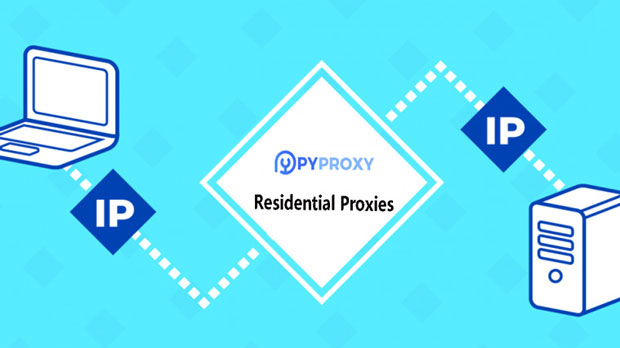In today's interconnected world, the internet's infrastructure relies heavily on services like Cloudflare to provide security, speed, and reliability for websites and applications. However, users sometimes encounter situations where they cannot load Cloudflare-protected pages directly through a regular network, yet can access them seamlessly when using a socks5 proxy. This issue often arises due to a range of network security mechanisms, geographic restrictions, or IP filtering rules that Cloudflare employs. socks5 proxies help users bypass these restrictions by masking their real IP addresses and routing traffic through different networks. In this article, we will explore the reasons behind this discrepancy and dive deeper into the technical aspects of how Cloudflare's security protocols and proxies interact with users' requests. Cloudflare's Security Features and How They Impact Regular NetworksCloudflare is a global Content Delivery Network (CDN) and Internet Security Service provider that helps websites prevent a variety of cyber threats, such as Distributed Denial of Service (DDoS) attacks, bot traffic, and malicious actors. As part of this service, Cloudflare uses multiple layers of security mechanisms, including IP blocking, rate-limiting, and CAPTCHA challenges.One key aspect of Cloudflare's security is its IP filtering system, which is designed to identify suspicious behavior based on the origin of traffic. When a website is protected by Cloudflare, requests to the site are first routed through Cloudflare's servers, which analyze the incoming traffic for potential threats. If the request is flagged as coming from an unfamiliar or suspicious source, Cloudflare may block the request or require additional verification, such as completing a CAPTCHA.For users on regular networks, especially those with dynamic or shared IP addresses, this can create problems. Some IP addresses may be flagged due to their association with malicious traffic, or Cloudflare might have blacklisted certain IP ranges because of previous abuse. Consequently, when a user attempts to load a Cloudflare-protected page through a regular network, the request may be blocked or delayed as a result of these security measures.How SOCKS5 Proxy Helps Bypass Cloudflare Security MechanismsSOCKS5 is a popular proxy protocol used to reroute internet traffic through an intermediary server. It allows users to disguise their true IP address and can help bypass various geographic restrictions, firewalls, or filtering mechanisms that websites, such as Cloudflare, may have in place.When using a SOCKS5 proxy, the user's internet traffic is redirected through a server located in a different region or country. This masks the user's real IP address, making it appear as though the request is coming from a different location. As a result, the user is able to circumvent any IP-based restrictions or filters that Cloudflare has applied to the original IP address. Cloudflare typically relies on IP reputation when making decisions about whether to allow or block a request. By using a SOCKS5 proxy, a user can change their apparent location, essentially presenting a clean slate to Cloudflare's security systems.This capability to change the origin of requests is particularly useful in situations where a user's IP has been flagged or is part of a larger IP blocklist. The proxy server acts as a middleman, ensuring that the user's requests are not directly linked to the blocked or suspicious IP.The Role of Cloudflare's Rate-Limiting and CAPTCHA ChallengesCloudflare's security systems also implement rate-limiting and CAPTCHA challenges as additional methods to ensure that traffic coming to websites is legitimate and not from automated bots. Rate-limiting refers to the process of limiting the number of requests from a particular IP address within a specific time frame. If a user exceeds the allowed number of requests, Cloudflare may temporarily block or throttle the connection.In situations where rate-limiting is triggered, or Cloudflare suspects that a request is coming from a bot, users may be presented with a CAPTCHA challenge. This challenge requires the user to prove they are human by performing tasks such as identifying images, typing in distorted text, or clicking on checkboxes.For users on regular networks, especially those sharing an IP address with others (e.g., public Wi-Fi networks), this can often lead to the CAPTCHA challenge appearing frequently. Since Cloudflare might flag entire IP ranges due to excessive or suspicious traffic, users with a non-static IP address could find themselves repeatedly encountering CAPTCHA challenges or being blocked from accessing the page entirely.In contrast, a SOCKS5 proxy can mitigate this issue by providing a fresh IP address. By changing the apparent origin of the traffic, the user avoids triggering rate-limiting or CAPTCHA checks, ensuring a smoother and uninterrupted browsing experience.Geographic Restrictions and How SOCKS5 Bypasses ThemAnother important factor contributing to the inability to load Cloudflare pages on regular networks is geographic restrictions. Many websites use geofencing or geo-blocking techniques to restrict access based on the user's location. This is often done for content licensing reasons, regulatory compliance, or to mitigate the risk of attacks originating from certain regions.Cloudflare may enforce geographic restrictions by blocking or filtering requests coming from certain countries or regions. For example, if a website owner wishes to restrict access to users in specific countries due to legal requirements, Cloudflare will enforce these rules. Regular users from restricted locations may encounter access issues, where Cloudflare prevents their requests from reaching the website.In such cases, a SOCKS5 proxy can prove useful. By using a proxy server located in a country where access is allowed, the user can bypass geographic restrictions. This enables the user to access Cloudflare-protected websites even if their real location is in a blocked region. SOCKS5 proxies provide the flexibility of choosing a server location, giving users the ability to route their traffic through an acceptable region.IP Reputation and How Proxies Influence Cloudflare's Decision-MakingCloudflare's IP reputation system plays a significant role in deciding whether to block or allow incoming traffic. IP reputation is built based on the historical behavior of IP addresses, with Cloudflare maintaining a large database of known malicious IP addresses associated with bots, spammers, or attackers. When a user tries to access a Cloudflare-protected site, the security system checks the IP address against this database to determine its trustworthiness.If an IP address has been previously associated with malicious activity, it may be automatically blocked, or its requests may be subject to additional scrutiny, such as CAPTCHA verification or rate-limiting. For users on regular networks, this can lead to repeated access issues if their IP address has a poor reputation.By using a SOCKS5 proxy, users can effectively change their IP address to one with a better reputation, or one that is not flagged in Cloudflare's system. Since the proxy server is responsible for routing the traffic, the user is not directly associated with any problematic IP addresses, allowing them to bypass Cloudflare's IP reputation-based filtering.ConclusionIn summary, the inability to load Cloudflare-protected pages through a regular network is often due to IP-based filtering, rate-limiting, CAPTCHA challenges, and geographic restrictions. These security mechanisms are designed to protect websites from malicious activity and ensure that only legitimate users can access the site. However, when users switch to a SOCKS5 proxy, they can bypass these restrictions by masking their real IP address, changing their apparent location, and avoiding triggers that would otherwise block or slow down their access.The use of SOCKS5 proxies allows users to access Cloudflare-protected websites with greater freedom and fewer interruptions. By understanding how Cloudflare's security systems work and how SOCKS5 proxies interact with them, users can make informed decisions about how to access the content they need in a secure and efficient manner.
Jan 16, 2025





























































